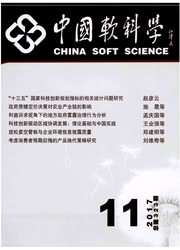

 中文摘要:
中文摘要:
作为世界上最大的能源消费和碳排放国家之一,中国节能减排的意义重大。根据节能减排的基本认识、以及在此基础上发展的产业结构-能源消费、产业结构-单位能耗和能源结构-碳排放3个联动模型,进行中国经济发展、能源消费增长与碳排放三者的行为特征分析。分析结果表明:第一,产业结构演进决定能源消费增长基本走向;第二,二产绝对主导的产业结构演进极大地延缓了单位GDP能耗倒"U"字型变化的过程;第三,以煤炭为主的能源供应结构奠定了国家碳排放增长的总体格局。有鉴于此,推动结构节能减排,是中国低碳经济发展的必由之路。初步判断,未来20-30年,在国家低碳经济发展中,产业结构和能源供应结构的改善至关重要,其中,前者的贡献度可能达到60%,后者的贡献度可能在10%。
 英文摘要:
英文摘要:
As one of the largest energy users and Greenhouse-gas(GHG) emission countries in the world,China have aroused much interest in its pledged reduction of last year in Copenhagen.Our intent is to place that carbon emission reduction by industrial structure evolution and energy consumption structure changing.In order to release the characters and potentials of energy saving and carbon reducing by structure evolution in China,three general models,namely the industrial-energy interconnection model,industrial-energy intensity interconnection model and the energy-carbon emission interconnection model,are employed.There are three findings: first,increasing of energy use was determined by industrial structure evolution from 1952 to 2007,and its influence effect was first acceleration and then deceleration;second,the effects of industrial structure evolution on energy intensity also was first acceleration and then deceleration,but the results were much less important due to a strong performance of heavy-manufacture industry in the country's economy;third,the correlation coefficient between energy structure and carbon emission was so lower because of the structure of energy supply dominated by coal totally.The structure evolution of industry and energy supply,as estimated,will play an important role in developing low carbon economy in the next twenty years or more.Their contribution degree will be 70%,in which contribution degree of industrial structure will be 60%,and contribution degree of energy structure will be 10%.This outcome implies that a basic path of developing low carbon economy in China is to speed up the structural evolutions of industrialization and energy supply.
 同期刊论文项目
同期刊论文项目
 同项目期刊论文
同项目期刊论文
 期刊信息
期刊信息
